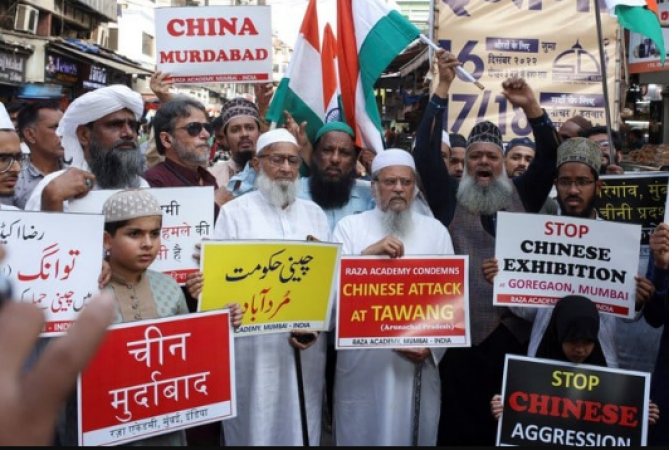
New Delhi: According to the Defense Minister of India, Indian soldiers have been injured in the recent clash with Chinese soldiers on the disputed border of the Himalayas. It was the most serious incident involving the two nuclear-armed countries in nearly two years.
On 9 December, "some personnel from both sides suffered injuries" due to PLAN troops coming across the imaginary border in the Tawang sector of India's easternmost state of Arunachal Pradesh, resulting in a face-off and a physical altercation. border with China.
Speaking to the Indian Parliament on Tuesday, Singh claimed that Chinese troops entered Indian territory and "unilaterally changed the status quo." Singh further said that local commanders met on December 11 to discuss the incident after troops from both sides swiftly withdrew.
Also Read: Major development for climate and clean energy is the fusion discovery
"The Chinese side was urged to desist from such behavior and maintain peace along the border. The issue has also been taken up with the Chinese side, through diplomatic channels," Singh continued.
The minister claimed that no Indian soldiers were killed or seriously injured during the clashes on Friday, but did not give details. So far, the Chinese government has kept its mouth shut about the incident.
For decades, India and China have had several conflicting claims along their 3,488 km (almost the entire length of the Himalayan range) undrawn border.
In June 2020, at least 20 Indian and four Chinese soldiers were killed in a clash between soldiers of the two countries in the Galwan area of the Ladakh region.
The incident escalated hostilities between the two nations, and a subsequent skirmish in January 2021 resulted in casualties among forces from both sides.
Since the 2020 conflict, senior military leaders from neighboring countries have met 16 times in an attempt to negotiate a withdrawal from the Line of Actual Control in Ladakh.
Also Read: Daughter saw her obscene photos in father's laptop, took this terrible step
Ahead of a Shanghai Cooperation Organization meeting in Uzbekistan, which was attended by Indian Prime Minister Narendra Modi and Chinese President Xi Jinping, talks resulted in India and China withdrawing some of their troops from the separate Gogra-Hotsprings area in Ladakh .
Modi and Xi did not meet bilaterally, either in Uzbekistan or as recently as at the Group of 20 summit in Bali last month. Relations between New Delhi and Beijing are "not healthy," according to Manoj Kevalramani, president of the Indo-Pacific Research Program and a China fellow at the Bangalore-based Takshashila Institution.
It is noteworthy that the two leaders have attended two multilateral summits since September without holding a bilateral meeting. In fact, after the G20 summit in Bali, there were signs of a more challenging relationship ahead, according to Kevalramani who spoke to Arab News.
He further said, "I believe this incident fits into what appears to be an ugly pattern that is developing along the entire stretch of the Line of Actual Control.
This only emphasizes the need to return to the patrolling procedures and confidence-building techniques that have been effective in the past.
According to Manoj Joshi of Delhi-based think tank Observer Research Foundation, China appears to have maintained its "strategy to keep pressure on India".
Also Read: EU pressure on US to secure release is urged by Assange's wife
"The issue is intention, and the Chinese, I believe, do not want to resolve the issue, even if there is disinformation," he continued. Tensions still exist in relations. The G20 summit to be hosted by India next year may be affected if relations deteriorate, the Chinese may decide to boycott it."